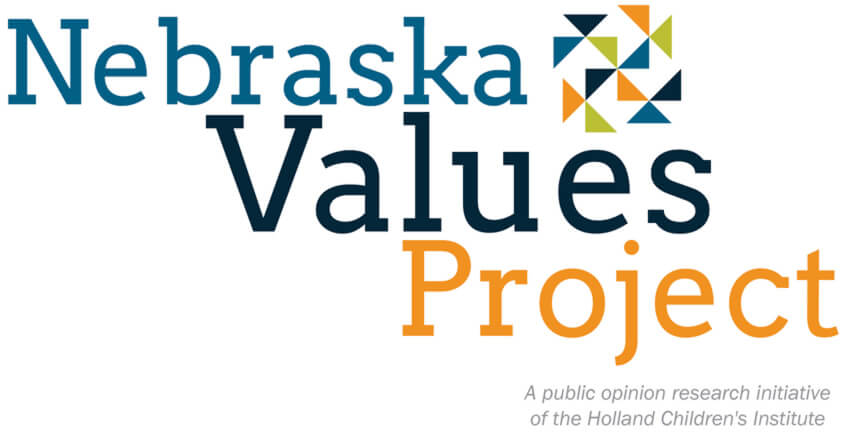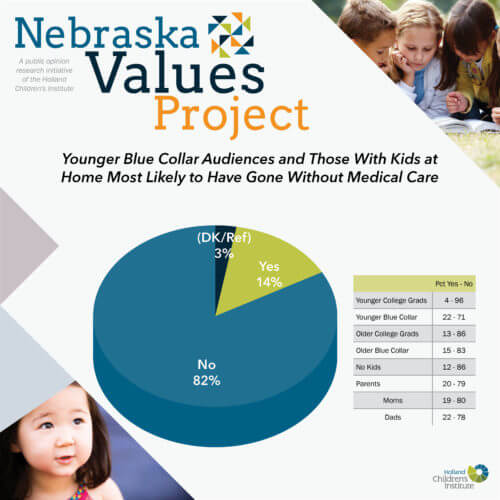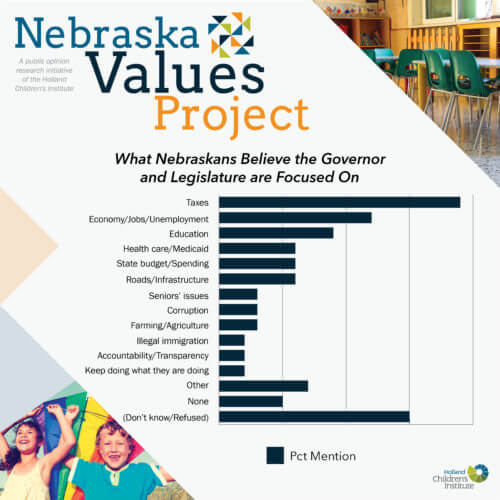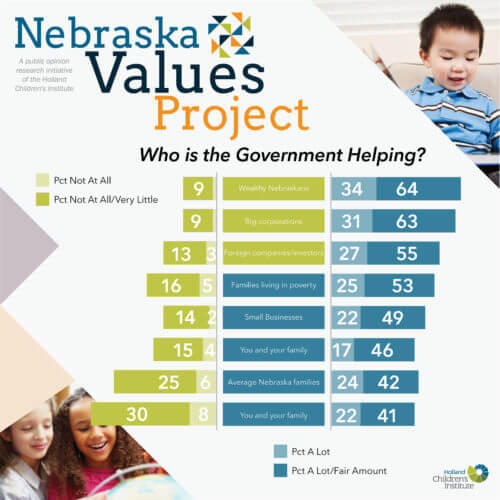The Nebraska Values Project is a public opinion research initiative of the Holland children’s Institute. In partnership with Myers Research & Strategic Services, a live telephone survey was conducted in early November 2017 to measure public opinion among Nebraska voters on public policy issues and demographic research affecting children and working families across Nebraska.

The third release of our public opinion research reveals how Nebraskans feel about the legislature and the Governor. There is a clear disconnect between the economic realities of Nebraska families and where they feel their government is focused. Nebraskans believe the Governor and the legislature have been focused on cutting taxes for corporations and the wealthy or doing little to help average families while at the same time a near majority report that they do not have enough savings to cover their bills for at least six months in the case of emergency.
The Disconnect Between State Government and Average Nebraskans
Highlights from Installment III:
- Across the partisan spectrum, Nebraskans believe state government has been focused on tax cuts and helping big corportations (63%) and the wealthy (64%), while many of them continue to struggle.
- Similarly, many say that the Governor and legislature are not focused on any issue or do not know which issues on which they have been focused.
- 56% say state government only does just some, very little or nothing at all to help their own families.
- When asked if they had enough money saved to cover bills for six months in case of an emergency, 48% said they do not.
- The only respondents who reported that they have enough savings for at least six months are those over age 50 with a college degree and those without small children.
- 21% of Nebraskans indicate that they have had trouble affording health care in the past few years, and 14% of voters say that they or someone in their household has actually had to go without medical care when they needed it.
The margin of error associated with these data at a 95 percent confidence level is +/-4.0 percent.





Shareable graphics are available on our Twitter page @HCInstitute